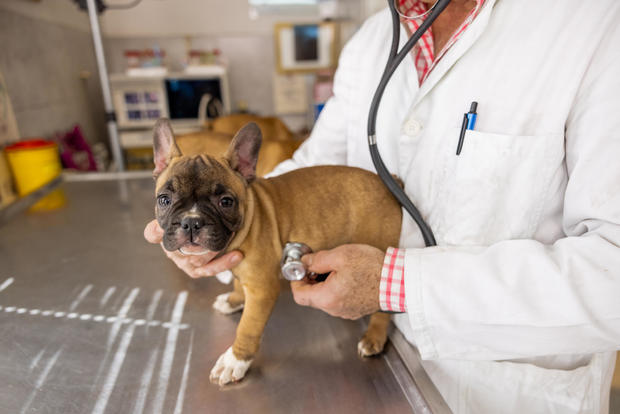How do pet insurance waiting periods work?
Pet insurance is a unique and cost-effective way for owners to protect both their pet and their bank account.
This type of insurance operates in a similar way to health insurance for humans. In return for a payment to a provider each month (or annually, if desired) the insured can secure coverage for a wide range of treatments, health issues and veterinarian visits. This can be particularly helpful to have in today's economy with higher expenses and market uncertainty.
While pet insurance works similarly to other insurance types, it has some unique differences, too. Most pet insurance providers won't cover pre-existing conditions, for example. And they'll make applicants complete a customary waiting period before coverage kicks in. It's important for owners to understand how these waiting periods work so they don't come up short when they need the coverage most.
If you're in the market for pet insurance, start with a free price quote now.
How do pet insurance waiting periods work?
In short, a pet insurance waiting period is the time between the insurance enrollment and when owners can actually start using the policy and getting reimbursed for claims. But the specifics of pet insurance waiting periods are closely tied to the provider being used.
"The 15-day waiting period, which begins the day after you enroll, is a set period of time before your coverage kicks in and you can be paid back for claims," Fetch by the Dodo explains. "We cover injuries and illnesses that occur after the waiting period is over. Any claims you submit during the waiting period will not be covered. Any injury or illness that occurs during the waiting period will be considered a pre-existing condition, which means it won't be eligible for coverage," the insurer notes.
According to Fetch by the Dodo, there's "also a 6-month waiting period before injuries of the hips and knees can be covered. You can waive the waiting period for knee injuries by having your pet examined by a vet in the first 30 days of your policy to determine that they don't have any relevant pre-existing conditions."
That 15-day waiting period, however, is specific to Fetch by the Dodo. It can alternate based on the provider. Spot pet insurance, for example, has a 14-day window that needs to be met. And Lemonade pet insurance has three different types of waiting periods. This includes two days for accidents, 14 for illnesses and six months for "cruciate ligament events (a common knee injury for dogs)."
"These waiting periods begin on your policy's start date," Lemonade explains. "We can only offer reimbursement for your claim after the applicable waiting period ends. That's why it's so important that you buy insurance long before you need it."
If you already know that you'll need pet insurance soon then get ahead of the waiting period now. Get a free quote in 30 seconds here and get started.
Why do pet insurance companies have waiting periods?
If all pet owners waited until their pet got sick to get insured, then the industry would quickly start losing money. To remain profitable, pet insurance companies need to maintain an organized approach to care.
"Waiting periods are designed to protect our Lemonade pet insurance community from someone who buys a policy just to cover one procedure — and then drops out," the insurance company explains.
"For one thing, waiting periods help us deter fraud," ManyPets pet insurance explains on its site. "Like all pet insurance companies, ManyPets excludes coverage for pre-existing conditions. Waiting periods prevent pet owners from sidestepping these exclusions; without waiting periods, some pet owners might purchase insurance only after their pet has developed a medical condition."
ManyPets also says that waiting periods are critical to keeping care consistent and affordable.
"Look, we completely understand that you'd prefer to have full access to coverage the moment you purchase your policy," the same post states on ManyPets' website. "But waiting periods help us keep prices affordable for all our customers. If new customers purchased plans only when they needed to file new claims, any pet insurance company would be forced to dramatically raise premiums to pay for it."
The bottom line
Pet insurance can provide some much-needed financial support for pet owners, particularly in today's economy. For owners to get the most out of a plan, however, they should apply before an emergency arises. This means taking into account the waiting period that pet insurance companies will tack onto any policy. So, if you need pet insurance now (or will in the near term) it pays to be proactive.
Get a free pet insurance quote here now or use the below table to start reviewing your options.




